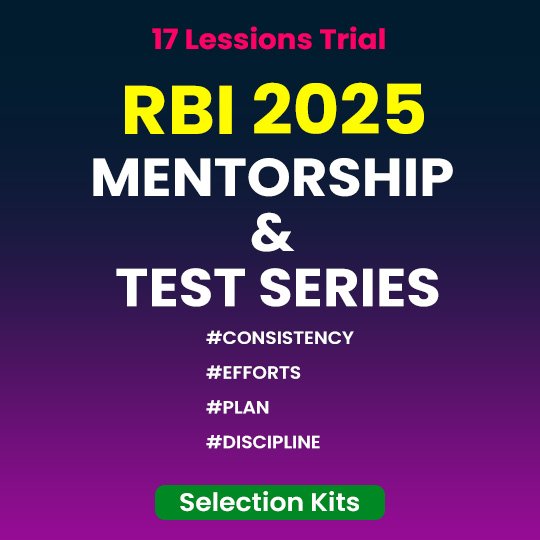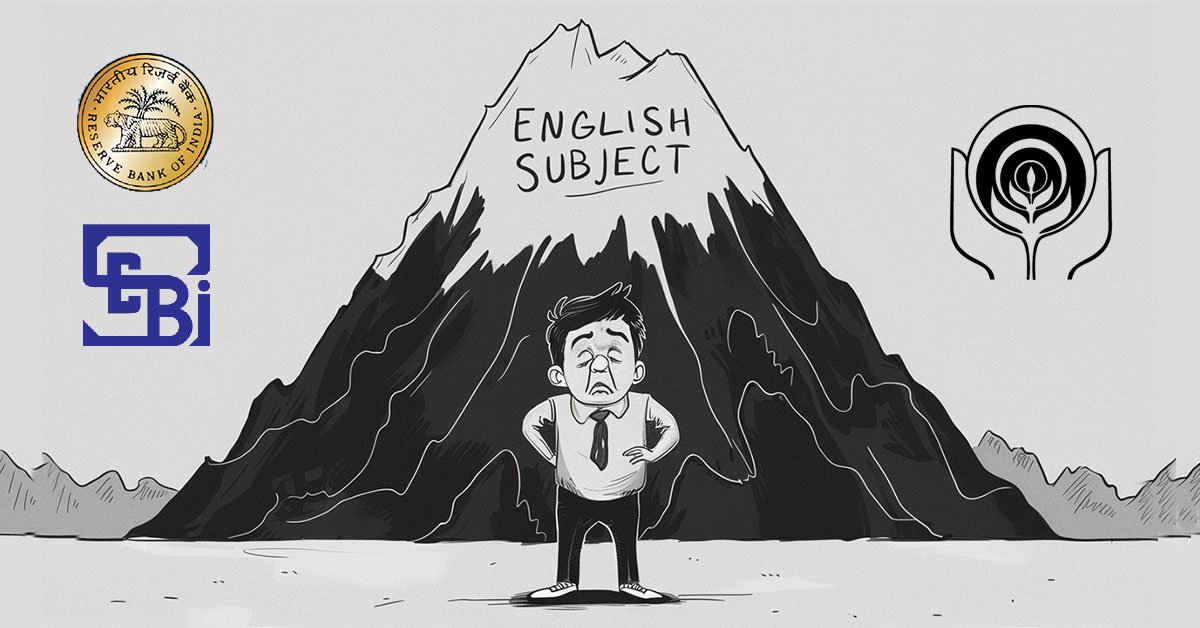Daily Current Affairs Quiz
15 November, 2025
International Affairs
1. Blue Origin’s New Glenn Rocket Successfully Launches NASA’s Escapade Mission
Context:
Blue Origin achieved a major milestone by launching its New Glenn rocket for the second time ever and for the first time on a NASA mission. This marks an important step for the company in establishing reliability in the heavy-lift launch market dominated by SpaceX’s Falcon Heavy and United Launch Alliance’s Vulcan.
Key Highlights:
Successful Launch of New Glenn
- New Glenn, a 320-foot reusable heavy-lift rocket, lifted off at 3:55 pm New York time on Thursday.
- This was only the second flight for the rocket, signaling continued test and development progress.
First NASA Mission for Blue Origin
- The mission was conducted under NASA’s ESCAPADE (Escape and Plasma Acceleration and Dynamics Explorers) program.
- This launch officially begins Blue Origin’s journey as a NASA launch service provider.
Payload: Rocket Lab-Built Spacecraft
- The rocket carried two identical spacecraft, developed by Rocket Lab.
- These satellites will conduct a dual-spacecraft study of the interaction between solar winds and the atmosphere of Mars.
Mission Purpose: Studying Mars’ Magnetosphere
- The core objective of ESCAPADE is to help scientists understand:
- How the solar wind strips away Mars’ atmosphere
- The role of Mars’ weak magnetosphere
- Long-term atmospheric evolution of the Red Planet
- Findings will support future human missions, planetary science, and Mars climate modeling.
National Affairs
1. WHO Global Tuberculosis (TB) Report 2025
Source: TH
Context:
The annual global assessment by the World Health Organization (WHO) on TB trends, prevention, diagnosis, and treatment at global, regional, and national levels.
Aim:
- Track progress towards the End TB Strategy (2015–2035).
- Target a 90% reduction in TB deaths and 80% reduction in incidence by 2030.
- Provide evidence-based guidance for national TB control policies.
Global TB Trends (2023–2024)
- Incidence: Global TB incidence declined 1.7%, reaching 131 cases per 100,000 population, reversing pandemic-related setbacks.
- Regional Patterns: Declines in African, South-East Asian, Eastern Mediterranean, and European regions; the Americas saw a fourth consecutive rise due to under-detection.
- Geographical Burden: South-East Asia (34%), Western Pacific (27%), Africa (25%) account for majority of cases.
- High-Burden Countries: Eight nations constitute 67% of global TB cases — India (25%), Indonesia (10%), Philippines (6.8%).
- Drug Resistance: MDR-TB remains a major threat with slow progress in detection and treatment.
- Funding: International TB financing has stagnated since 2020; donor cuts from 2025 threaten programs.
TB Trends in India
- Incidence Rate: Declined from 195 (2023) to 187 per 100,000 (2024) — a 21% reduction since 2015, nearly double the global average (12%).
- Case Detection: 2.61 million of 2.7 million estimated cases diagnosed in 2024, reducing “missing cases.”
- Mortality: TB deaths decreased from 28 (2015) to 21 per 100,000 (2024); target is 3 per 100,000 by 2025.
- Drug Resistance: India accounts for 32% of global MDR-TB cases, though incidence is gradually declining.
- Policy Momentum: Programs like Ni-kshay 2.0 and TB-Mukt Bharat improved treatment coverage (92%) and expanded molecular diagnostics.
Initiatives to Reduce TB
Global Level:
- End TB Strategy (WHO 2015–2035): Global framework to cut TB deaths and incidence.
- UN High-Level Meetings (2018, 2023): Commitments for funding, vaccine development, and universal care.
- Global Fund & Stop TB Partnership: Resource mobilization, surveillance, innovation.
- New WHO Guidelines (2024–25): Updated guidance on diagnosis, MDR-TB treatment, and TB–diabetes comorbidity.
India Level:
- National Strategic Plan for TB Elimination (2017–2025): Aiming 80% incidence reduction by 2025.
- Ni-kshay Poshan Yojana: Nutritional support for TB patients.
- Pradhan Mantri TB Mukt Bharat Abhiyan: Community engagement and corporate support.
- Diagnostics Expansion: Nationwide rollout of Truenat and CBNAAT molecular tests.
Challenges to TB Reduction in India
- Persistent Undernutrition: Malnutrition drives TB vulnerability, sustaining transmission.
- Rising MDR-TB Burden: Limited access to newer, shorter, less toxic regimens.
- Funding Stagnation: Declining global and national TB financing threatens continuity.
- Weak Surveillance: Under-reporting from rural/private sectors delays detection and treatment.
- Limited Vaccine Pipeline: No new TB vaccine yet in large-scale rollout.
Recommendations
- Accelerate Vaccine R&D: Prioritize investment in next-generation TB vaccines and equitable access.
- Expand Molecular Diagnostics: Scale up Truenat, CBNAAT, and LAMP-based tests for high-risk districts.
- Ensure Sustainable Financing: Boost domestic funding to reduce donor dependency.
- Strengthen Nutrition & Social Support: Integrate TB programs with food security and welfare schemes.
- Integrate Digital Surveillance: Use AI-enabled platforms for real-time case tracking and treatment monitoring.
2. UNEP Global Cooling Watch 2025
Context:
- The Global Cooling Watch 2025 is UNEP’s second global assessment of cooling systems, analyzing their environmental, economic, and equity impacts.
- Provides the scientific foundation for the Global Cooling Pledge.
Published by: United Nations Environment Programme (UNEP) at COP30, Belém, Brazil (2025).
Aim:
- Analyse global cooling trends and project future emissions.
- Propose a Sustainable Cooling Pathway to achieve near-zero emissions.
- Ensure equitable access to cooling worldwide.
Key Trends Identified
- Rising Cooling Demand:
- Global cooling capacity projected to increase 2.6× from 22 TW (2022) to 58 TW by 2050.
- Driven by urbanization, income growth, and intensifying heatwaves, especially in developing nations.
- Emission Surge:
- Without strong intervention, cooling-related GHG emissions could reach 10.5 billion tons CO₂e by 2050, nearly double 2022 levels.
- Developing Country Growth:
- Cooling demand in Article 5 countries (developing nations) expected to quadruple, highlighting inequality in energy access.
- Energy Consumption:
- Electricity use for cooling may rise from 5,000 TWh (2022) → 18,000 TWh (2050).
- Risks power grid strain and high peak load demand, especially in tropical regions.
- Heat Inequality:
- Over 2 billion people in low-income households remain vulnerable to extreme heat due to lack of affordable, efficient cooling technologies.
- Passive Cooling Potential:
- Measures like reflective roofing, urban greening, and ventilation can lower indoor temperatures by up to 8°C and reduce energy use by 15–55%.
- HFC Transition:
- Phasing down high-GWP refrigerants (HFCs) could eliminate up to 0.4°C of projected global warming this century.
- Global Cooling Pledge Progress:
- 72 nations and 80 organizations joined, aiming for 68% emission reduction in cooling sector by 2050.
Successes Highlighted
- Strengthened global collaboration through the Global Cooling Pledge.
- Mainstreaming of passive cooling measures in building codes, especially in Asia and Africa.
- Technological advances in hybrid and low-energy cooling systems, improving efficiency by up to 50%.
- Enhanced private sector participation in sustainable cooling.
- Emerging tiered access frameworks improving equity and resilience for heat-vulnerable populations.
Limitations Identified
- Persistent inequality in cooling access, leaving millions unprotected.
- Insufficient adaptation finance, covering <20% of global needs.
- Policy fragmentation across energy, housing, and environment sectors.
- Delayed HFC phase-down and poor refrigerant disposal increase emissions.
- Dependence on fossil-based electricity undermines efficiency and refrigerant gains.
UNEP Recommendations
- Adopt a Sustainable Cooling Pathway:
- Combine passive design, efficient appliances, and clean energy integration.
- Accelerate Refrigerant Phase-Down:
- Implement Kigali Amendment fully with lifecycle refrigerant recovery.
- Mobilize Green Finance:
- Use concessional lending, PPPs, climate bonds to expand sustainable cooling access.
- Mandate Passive Cooling Standards:
- Integrate into national building codes and urban planning regulations.
- Ensure Equitable Access:
- Subsidize efficient cooling for vulnerable communities and heat-stressed regions.
3. ARISE Program
Context:
- ARISE (Accelerating Resilience Investments and Innovations for Sustainable Economies) is a next-generation resilience initiative under the Climate Investment Funds (CIF).
- Launched at COP30, Belém, Brazil, with initial funding from Germany and Spain (exact amount to be specified).
Aim:
- Strengthen economic and institutional resilience of developing countries against climate shocks.
- Transform climate risks into opportunities for sustainable growth.
- Mainstream climate resilience into national economic planning.
- Mobilize catalytic finance for adaptation.
- Empower communities and institutions to withstand and recover from climate risks like floods, droughts, and storms.
Climate Investment Funds (CIF)
- A multilateral climate finance mechanism providing concessional funding to developing countries for low-carbon, climate-resilient development.
- Established: 2008
- Managed by: Hosted within the World Bank, implemented through six Multilateral Development Banks (MDBs) including IFC, ADB, AfDB, EBRD, etc.
Aim:
- Catalyze transformational climate investments.
- Mobilize public and private finance for clean technology, energy access, resilience, and nature-based solutions in over 70 low- and middle-income countries.
Key Features of CIF
- Two Core Funds:
- Clean Technology Fund (CTF): Funds renewable energy, clean transport, and energy efficiency projects.
- Strategic Climate Fund (SCF): Pilots and scales innovative programs like:
- Pilot Program for Climate Resilience (PPCR)
- Forestry Investment Program
- Smart Cities Program
- Blended Finance Model:
- Combines CIF concessional funds with MDB and private investments.
- Reduces investment risk and attracts commercial capital.
4. Export Promotion Mission (EPM)
Source: PIB
Background:
- A flagship, outcome-based initiative to create a unified, technology-driven framework for promoting Indian exports.
- Objective: Reduce trade barriers, enhance global competitiveness, and consolidate export support schemes under one mission.
- Launched: Announced in Union Budget 2025–26, approved by Union Cabinet, November 2025
- Implementing Agency: Directorate General of Foreign Trade (DGFT), Ministry of Commerce & Industry
- Term & Outlay: FY 2025–26 to FY 2030–31, with a total budget of ₹25,060 crore
Aim
- Boost Indian exports via financial and non-financial interventions.
- Ensure inclusive, sustainable, and regionally balanced growth in exports.
- Align export growth with Viksit Bharat @2047 vision.
Key Features
- Two Sub-Schemes:
- Niryat Protsahan: Financial support
- Interest subvention, export factoring, and credit guarantees, primarily for MSMEs.
- Niryat Disha: Non-financial support
- Export quality improvement, branding, packaging, logistics, trade fairs, and capacity building.
- Niryat Protsahan: Financial support
- Scheme Integration:
- Merges existing export-support initiatives like:
- Interest Equalisation Scheme (IES)
- Market Access Initiative (MAI)
- Merges existing export-support initiatives like:
- Digital Implementation:
- All applications, approvals, and fund disbursals managed through an integrated DGFT digital platform.
- Sectoral Focus:
- Priority to textiles, leather, gems & jewellery, engineering goods, and marine products, especially sectors facing global tariff and supply chain pressures.
- Impact Goals:
- Expand access to trade finance
- Enhance compliance and certification readiness
- Promote entry into new markets
- Generate employment in manufacturing and logistics
5. Digital Personal Data Protection Act, 2023
What it is:
- A law to protect the personal data of Indian citizens in digital form.
- Passed in: August 2023 by Parliament.
- Recent Update: Large parts of the Act notified by the Union government in 2025, along with the DPDP Rules, 2025.
- Aim: Ensure data privacy, accountability of data-collecting entities, and compliance with Supreme Court’s 2017 K.S. Puttaswamy v. Union of India judgment affirming the right to privacy.
Key Provisions of the DPDP Act
- Scope and Coverage:
- Applies to “data fiduciaries” (entities that collect or process personal data).
- Exemptions: State and its instrumentalities.
- Rights of Individuals (Data Principals):
- Right to access, correct, erase, or port personal data.
- Enforcement of consent-based data processing.
- Obligations for Data Fiduciaries:
- Implement safeguards to protect personal data.
- Appoint a Data Protection Officer (DPO).
- Ensure transparent data handling practices.
- Penalties:
- Firms can face fines or penalties for non-compliance or breach of data protection obligations.
- Consent Manager Framework (from Nov 2026):
- Enables authorized intermediaries to exercise data removal, correction, or other rights on behalf of users.
- Impact on Right to Information (RTI):
- Limits the obligation of government bodies to provide personal information if public interest conflicts with privacy rights.
Implementation Timeline
- 2025 Notification: Most parts of the Act and DPDP Rules come into effect immediately.
- November 2026: Key provisions like DPO disclosure and the Consent Manager framework will become enforceable for firms.
6. Manipur Tribal Body Seeks Removal of ‘Any Kuki Tribes’ (AKT) Category
Source: TH
Context:
A major tribal organisation in Manipur, Thadou Inpi Manipur, has urged the Central Government and the Ministry of Tribal Affairs to remove the “Any Kuki Tribes (AKT)” category from the state’s Scheduled Tribes (ST) list. The demand has gained support from other groups, including the Meitei Alliance and representatives of the Hmar community.
What Is “Any Kuki Tribes (AKT)”?
- A collective/umbrella category added under the ST list in 2003.
- Instead of naming individual tribes, it broadly lists “Any Kuki Tribes”.
- Covers multiple sub-groups using the larger “Kuki” identity.
Why Is There Opposition to AKT?
1. Lack of Clarity
- The term “Any Kuki Tribes” is considered vague and open-ended.
- Critics argue that it allows indefinite additions without clear tribal identity markers.
2. Risk of Misuse
- Allegation that AKT enables:
- identity fraud,
- manipulation of ST certificates,
- inflow of individuals with no historical roots claiming ST benefits.
3. Overlap With Existing Tribes
- Tribes such as Thadou, Hmar, Vaiphei, Gangte, etc. are already listed individually.
- AKT allegedly duplicates some groups, reducing distinct recognition.
4. Not Meeting Constitutional Criteria
- Under Article 342, ST status requires:
- distinct culture/linguistic identity,
- geographical isolation,
- social and economic backwardness.
- Opponents say “Kuki” is a political umbrella, not a single tribe.
5. Ethnic & Security Concerns
- Claims that loose classification may:
- facilitate illegal immigration from Myanmar,
- expand land/benefit claims,
- fuel demographic tensions.
Banking/Finance
1. RBI Recognises SRPA as Self-Regulatory Body for Payment System Operators
Context:
The Reserve Bank of India (RBI) has formally recognised the Self-Regulated PSO Association (SRPA) as a self-regulatory organisation (SRO) for the payment system operators (PSO) sector, a key step in strengthening governance, oversight, and compliance in India’s digital payments ecosystem.
What is SRPA?
The Self-Regulated PSO Association (SRPA) is an industry-led body formed to:
- Support the orderly growth of payment system operators
- Establish uniform standards and best practices
- Strengthen compliance mechanisms
- Act as a bridge between the RBI and PSO ecosystem
SRPA is an industry-led body consisting of major payment system operators, including:
- Razorpay
- PhonePe
- BillDesk
- CRED
- Infibeam Avenues (CCAvenue)
- Mobikwik
- Euronet
- Spice Money, Payworld, Unimoni, Mswipe, Zokudo, SabPaisa, OxyMoney, Open, In Solutions Global, Concerto Systems
More PSOs are expected to join after RBI’s formal approval.
Why RBI Granted SRO Status to SRPA?
- To streamline compliance and ensure uniform standards across the PSO ecosystem
- To promote ethical conduct and consumer protection
- To act as a bridge between the industry and the regulator
- To improve supervision, dispute resolution, and best practices in digital payments
- To support India’s fast-growing UPI-driven payments landscape
Role of an SRO in the Payments Sector
An SRO:
- Frames and enforces rules, codes of conduct, and compliance standards
- Ensures industry alignment with RBI’s regulatory priorities
- Promotes self-discipline and accountability among members
- Enhances consumer trust in digital payments
India already has SROs for other sectors, such as:
- FACE – Fintech (digital lending)
- FIDC – NBFCs
- Sa-Dhan & MFIN – Microfinance
- FIMMDA – Fixed income and derivatives markets
SRPA is now the dedicated SRO for payment system operators.
What Will SRPA Do Now?
According to its leadership, SRPA will:
- Operationalise its governance and supervisory mechanisms
- Ensure members follow regulatory and ethical standards
- Promote innovation while safeguarding consumer interests
- Support a safe, inclusive, and globally benchmarked payments ecosystem
Significance for India’s Digital Payments Ecosystem
- The SRO approval comes at a time when India is witnessing unprecedented digital payments growth, led by:
- UPI (20.7 billion transactions worth ₹27.28 trillion in October 2025)
- Growing merchant payments, wallets, and card-based transactions
- Strengthens institutional frameworks needed for a mature and resilient payments industry
- Enhances risk management, fraud detection, and operational discipline
2. Flexible Inflation Targeting (FIT) Framework in India
Source: TH
Context:
Introduced in 2016, FIT provides a forward-looking monetary policy mandate for the Reserve Bank of India (RBI) to maintain inflation at 4% ± 2%. The current FIT cycle is ending in March 2026; the RBI is reviewing the framework for the next five years (up to 2030–31).
Objective: Maintain price stability, protect the poor, encourage savings and investments, and support sustainable economic growth.
What Is FIT?
The Flexible Inflation Targeting (FIT) framework is India’s modern monetary policy system, introduced in 2016 through amendments to the RBI Act, 1934. It gives the Reserve Bank of India (RBI) and the Monetary Policy Committee (MPC) a clear, forward-looking mandate to maintain price stability while supporting economic growth.
Why Was FIT Introduced?
- To curb persistently high inflation (2008–2014 period).
- To move India towards modern, rule-based monetary policy.
- To improve transparency and accountability of RBI.
- To formally institutionalize the MPC.
Key Questions in FIT Review
- Headline vs. Core Inflation Targeting
- Headline inflation includes food and fuel; core inflation excludes them.
- Rangarajan argues headline inflation should be targeted:
- Food inflation is not solely due to supply shocks—it can affect general price levels through second-round effects like wage increases.
- Aggregate liquidity expansion is key: without it, food price changes only affect relative prices, not overall inflation.
- Effective monetary policy in India must consider food inflation due to its broader impact on core inflation and overall price levels.
- Acceptable Level of Inflation
- Using historical data and growth-inflation relationships:
- The threshold or inflection point for inflation in India is around 4%.
- Low inflation (below 4%) can support growth, but higher inflation negatively impacts savings, investment, and growth.
- Implication: FIT should continue to target around 4%, with very limited justification for a higher target.
- Using historical data and growth-inflation relationships:
- Inflation Band
- Current band: 4% ± 2% (i.e., 2%–6%).
- Provides flexibility for monetary authorities to respond to shocks.
- Concerns:
- Staying close to the upper limit (6%) for prolonged periods could defeat FIT’s purpose.
- High inflation (above 6%) historically correlates with lower growth.
Key Considerations for FIT and Macroeconomic Stability
- Fiscal-Monetary Coordination:
- High inflation in the 1970s–1980s was linked to fiscal deficit monetisation.
- FIT works best alongside Fiscal Responsibility and Budget Management (FRBM) Act provisions.
- Policy Implications:
- Forward-looking approach: monetary policy must align with projected fiscal and external pressures.
- FIT provides a flexible yet disciplined framework for maintaining price stability while supporting growth.
3. RBI Extends Trade Relief to Exporters Facing Tariff Headwinds
Context:
- Exporters from India are facing global trade disruptions, particularly due to a steep 50% tariff imposed by the U.S. on Indian shipments, effective 27 August 2025.
- The tariff has impacted cash flow and timely repatriation of export proceeds.
Key Measures Announced:
- Regulatory Amendment:
- The change is made through the Foreign Exchange Management (Export of Goods & Services) (Second Amendment) Regulations, 2025.
- Notification issued on 13 November 2025 by RBI Regional Director Rohit P. Das.
- Extended Export Realisation Timelines:
- Exporters now have 15 months (up from 9 months) to repatriate export proceeds.
- Advance payments from overseas buyers can now be settled within 3 years instead of 1 year.
- Loan Moratoriums and Credit Support:
- Exporters holding standard export credit as of Aug 31 can avail a 4-month moratorium (Sept–Dec 2025) on loan installments and interest.
- Interest accrues as simple interest, with the option to convert into a separate loan repayable between April–Sept 2026.
- Working Capital Flexibility:
- Banks may reduce margins and recalculate drawing power, allowing exporters up to 450 days for pre- and post-shipment credit repayment.
- Exporters unable to ship goods may repay packing credit via domestic sales or proceeds from other export orders.
- Prudential Safeguards:
- These relaxations won’t be treated as restructuring, protecting exporters’ credit histories.
- Banks are required to maintain a 5% general provision on such accounts.
Significance:
- Provides liquidity relief to exporters struggling due to external trade shocks.
- Helps mitigate financial stress arising from delayed payments and steep foreign tariffs.
- Supports India’s export competitiveness amid global trade tensions.
4. SEBI Proposes to Simplify Offer Documents
Context:
Current offer documents for IPOs and FPOs are often lengthy and complex, making it difficult for retail investors to read and engage meaningfully.
Key Proposals:
- Offer Document Summary:
- Mandate the publication of a concise summary of the offer document.
- The summary will be separate from the draft offer document.
- To be made available on:
- Issuer’s website
- SEBI website
- Stock exchanges’ websites
- Lead managers’ websites
- Rationalisation of Disclosures:
- Aim to streamline and rationalise disclosures to reduce unnecessary complexity.
- Abridged Prospectus:
- SEBI proposes to dispense with the requirement of an abridged prospectus, as the summary will serve its purpose.
Significance:
- Improves information accessibility for investors.
- Encourages greater engagement and participation in IPOs.
- Makes reviewing and understanding disclosures easier, especially for retail investors.
5. Sebi to Revamp Settlement Rules, Curb Penalties
Context:
The Securities and Exchange Board of India (Sebi) has launched a review of its case settlement rules to simplify calculations, address concerns about inflated penalties, and make the process more accessible for market participants.
What Is the Case Settlement Framework?
SEBI’s settlement mechanism allows individuals or entities accused of market violations to settle cases by paying a settlement amount without undergoing lengthy litigation.
It helps:
- reduce enforcement backlog
- ensure faster regulatory resolution
- avoid prolonged legal uncertainty
Key Objectives
- Simplify and expedite settlements: Encourage voluntary settlement rather than waiting for regulatory action.
- Reduce disproportionate penalties: Address complaints that base amounts, unrelated charges, and interest on disgorgement inflate total settlement sums.
- Clarify non-monetary penalties: Re-evaluate practices like market bans and mandatory declaration of ‘officers in default,’ which are seen as beyond the committee’s scope.
6. SEBI to Deliberate on Conflict of Interest Report in December 2025
Context:
Securities and Exchange Board of India (SEBI) plans to discuss an expert panel report on conflict of interest regulations for its senior officials at the next board meeting on December 17, 2025. The move follows governance scrutiny after conflict-of-interest allegations against former SEBI chairperson Madhabi Puri Buch, which involved claims of undisclosed offshore investments (refuted by Buch and her husband).
Why the Review Now?
1. Governance Concerns
- Public attention intensified after conflict-of-interest allegations against the former chairperson.
- Even though Buch and her husband categorically denied the charges, the episode exposed regulatory gaps in disclosures and oversight.
2. Need for Enhanced Transparency
- SEBI wants to align internal rules with global best practices.
- Strengthening conflict-of-interest norms is vital to reinforce trust in India’s market regulator.
What the Expert Panel Report Covers
SEBI’s expert committee has submitted recommendations including:
1. Stricter Disclosure Requirements
- Mandatory, periodic declarations of financial interests for senior officials.
- Expanded scope to cover family members, offshore structures, and beneficial ownership.
2. Cooling-Off & Recusal Rules
- Guidelines on restricting officials from handling cases where there could be personal or financial links.
- Possible cooling-off periods before joining private sector entities.
3. Higher Monitoring & Internal Audits
- Strengthening of internal vigilance and compliance systems.
- Real-time tracking of potential conflict situations.
4. Clarity on Permissible Investments
- Defining which assets or structures (e.g., offshore funds, trusts, startups, algorithmic trading firms) are allowed or prohibited.
7. Federal Bank Launches ‘Bharat Surotsav’
Context:
Federal Bank unveiled ‘Bharat Surotsav’, a signature cultural initiative celebrating India’s music and dance heritage, in Chennai. The launch highlights the bank’s efforts to connect with audiences through arts and culture while reinforcing its brand identity.
Key Highlights:
- Festival Type: Immersive dance and music fusion festival
- Objective: Celebrate India’s artistic heritage by blending iconic performers with contemporary sounds
- Featured Artists:
- Padma Shri Shobana (Classical Dance)
- Agam Band (Carnatic-Rock Fusion)
- Charumathi Raghuraman (Carnatic Violin)
- Ravi Chari (Sitar Maestro)
- Ticketing:
- Federal Bank customers receive 15% discount using debit/credit cards (max ₹200 per booking)
- Tickets available via BookMyShow
Agriculture
1. Protection of Plant Varieties and Farmers’ Rights Act (PPV&FRA), 2001
Source: PIB
Context:
- India’s first sui generis legal framework for protecting plant varieties and farmers’ rights.
- Enacted in 2001 under the Ministry of Agriculture & Farmers’ Welfare; operational since 2005.
- Marks 25 years of promoting innovation in plant breeding while safeguarding farmers’ contributions to biodiversity.
Aim:
- Establish a balanced system that encourages plant breeding innovation.
- Recognize and protect farmers’ role in conserving genetic diversity.
Key Features of PPV&FRA Act, 2001
- Farmers’ Rights (Section 39):
- Right to save, use, sow, resow, exchange, and share seeds of registered varieties.
- Eligible for compensation if registered varieties fail to perform.
- Breeders’ Rights:
- Exclusive rights to produce, sell, or license protected varieties.
- Encourages R&D in plant breeding with legal IP protection.
- Registration Criteria (DUS):
- Varieties must meet Distinctness, Uniformity, and Stability standards.
- 57 crop species currently notified for registration.
- National Gene Fund:
- Channels benefit-sharing fees.
- Supports in-situ conservation and rewards farmers for conserving germplasm.
- Researchers’ Exemption:
- Registered varieties can be used for experimentation and varietal development.
- Benefit-Sharing & Protection:
- Recognition of community knowledge through the National Register of Plant Varieties (NRPV).
- Legal remedies provided against biopiracy.
2. Plant Genome Saviour Awards
Source: PIB
Context:
A national recognition scheme instituted under Section 39(1)(iii) of PPV&FRA. Honors farmers and communities conserving traditional and endangered plant varieties.
Purpose:
- Reward grassroots conservationists of genetic resources, including indigenous landraces and wild relatives of crops.
2025 Recipients:
- Community Seed Bank (Telangana)
- Mithilanchal Makhana Producers’ Association (Bihar)
- CRS-Na Dihing Tenga Unyan Committee (Assam)
Significance:
- Encourages seed sovereignty and biodiversity preservation.
- Strengthens the connection between traditional knowledge and modern plant breeding.
Facts To Remember
1. Yesteryear star Kamini Kaushal passes away at 98
Actor Kamini Kaushal, one of Hindi cinema’s earliest female stars who began her career with the classic Neecha Nagar in 1946 and went on to act in a host of films right till 2022, died in her Mumbai home. She was 98.
2. Esha claims bronze at shooting Worlds
Esha Singh claimed her maiden World Championship medal, winning the 25m pistol bronze at the ISSF World Championships in Cairo on Friday.
3. Archers Dhiraj and Ankita make history as India claims top spot
Paris Olympians B. Dhiraj and Ankita Bhakat became the first-ever Indian male and female recurve archers to win individual titles at the Asian championships in Dhaka on Friday.
4. At chess World Cup, P Harikrishna’s defiant run shows Indian chess has depth
Over the last few years, as chess prodigies got younger and younger, Pentala Harikrishna made a name for himself as a second by powering the women’s world championship-winning campaign of Ju Wenjun, and then helping D Gukesh become the youngest world champion.



















